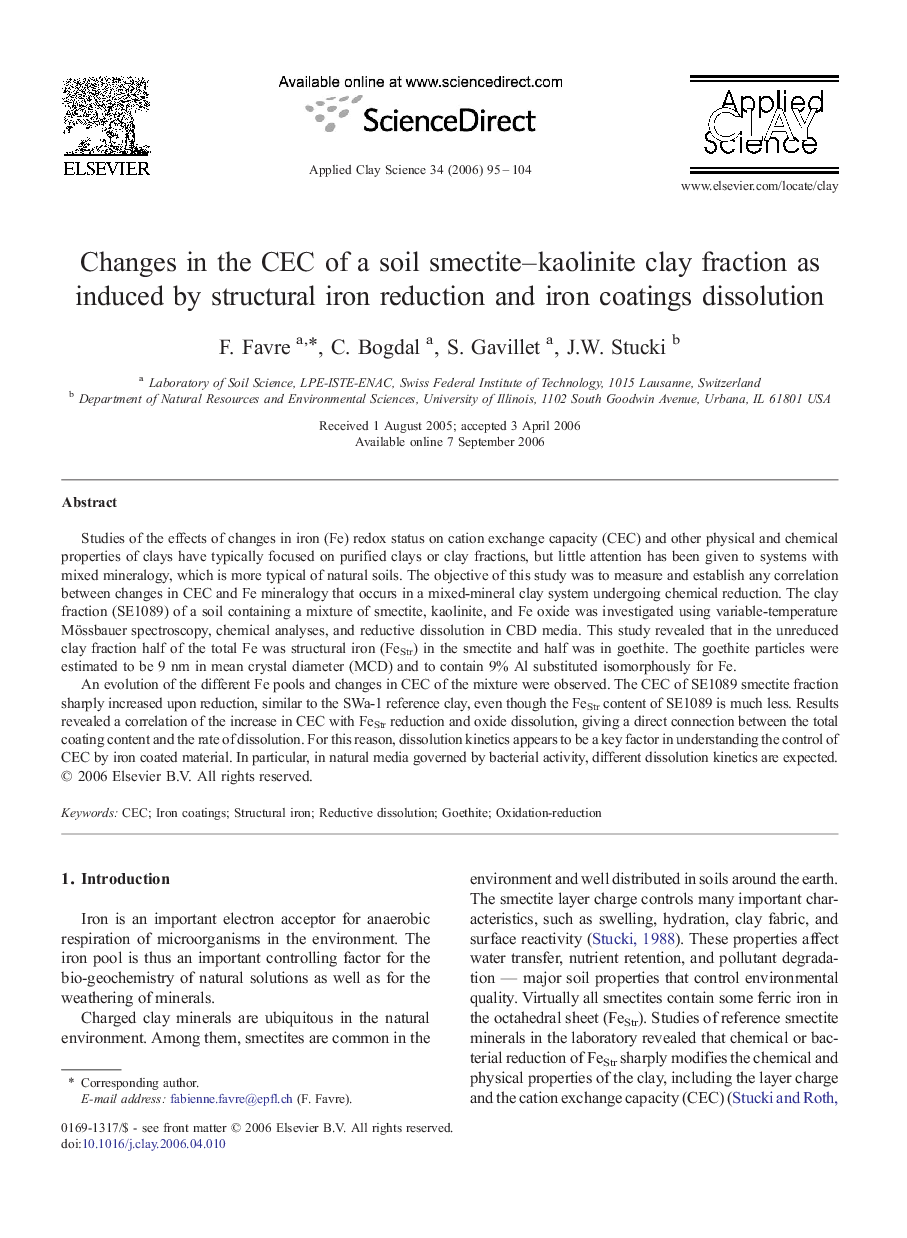| Article ID | Journal | Published Year | Pages | File Type |
|---|---|---|---|---|
| 1696740 | Applied Clay Science | 2006 | 10 Pages |
Studies of the effects of changes in iron (Fe) redox status on cation exchange capacity (CEC) and other physical and chemical properties of clays have typically focused on purified clays or clay fractions, but little attention has been given to systems with mixed mineralogy, which is more typical of natural soils. The objective of this study was to measure and establish any correlation between changes in CEC and Fe mineralogy that occurs in a mixed-mineral clay system undergoing chemical reduction. The clay fraction (SE1089) of a soil containing a mixture of smectite, kaolinite, and Fe oxide was investigated using variable-temperature Mössbauer spectroscopy, chemical analyses, and reductive dissolution in CBD media. This study revealed that in the unreduced clay fraction half of the total Fe was structural iron (FeStr) in the smectite and half was in goethite. The goethite particles were estimated to be 9 nm in mean crystal diameter (MCD) and to contain 9% Al substituted isomorphously for Fe.An evolution of the different Fe pools and changes in CEC of the mixture were observed. The CEC of SE1089 smectite fraction sharply increased upon reduction, similar to the SWa-1 reference clay, even though the FeStr content of SE1089 is much less. Results revealed a correlation of the increase in CEC with FeStr reduction and oxide dissolution, giving a direct connection between the total coating content and the rate of dissolution. For this reason, dissolution kinetics appears to be a key factor in understanding the control of CEC by iron coated material. In particular, in natural media governed by bacterial activity, different dissolution kinetics are expected.
